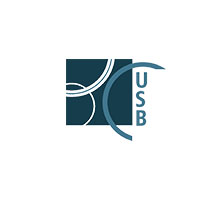Eh, Madita Helen
(2025).
A biomechanical comparison of pedicle screw fixation depending on screw material and pilot hole preparation in osteoporotic vertebrae.
PhD thesis, Universität zu Köln.

|
PDF
Dissertation-Druckversion-Madita__Eh1.pdf - Accepted Version Download (16MB) |
Abstract
The prevalence of osteoporosis in the population has increased and is projected to continue increasing because of the aging population1. Surgery in the osteoporotic spine come with complications such as pedicle screw loosening, pull out and fractures in adjacent vertebrae2,3, with bone mineral density being a risk factor for screw loosening4,5. To reduce the risk of surgery in the osteoporotic spine different techniques and materials have been tested. In this study two experiments were conducted. In the first test series ten osteoporotic fresh-frozen human lumbar spines were instrumented from L3-L4 using titanium or CFR/PEEK rods and screws. Then cyclic loading was conducted with a frequency of 3 Hz, with 500 N for the first 2000 cycles and increased to 950 N for 100,000. The cavity surrounding the screw was measured at 3 points using CT scans. Then the maximum zero-time failure load was measured in a universal testing machine. There was no significant difference in the force to failure or the cavity at the screw base and shaft. However, the CFR/PEEK screws had a smaller total cavity and smaller cavity at the screw tip. In the second part of the study the use of a thoracic probe and drill for pilot hole preparation in thoracic vertebrae was compared in 12 osteoporotic thoracic vertebrae. The left and right pedicle were alternately prepared with a thoracic probe or drill and instrumented with a standard titanium screw. Cyclic loading was conducted with an initial load of -25N to + 25 N cranio-caudal with an increase of 5N every 500 cycles to a maximum of 10,000 cycles. Loosening was defined as a displacement of the screw head >5 mm. There was no difference in the two preparation techniques with regard to number of cycles to failure or maximum force to failure. The elastic modulus of CFR/PEEK is closer to that of bone6, which could result in a more even force distribution through the vertebrae of the axial force applied to the spinal column and reduced microfractures and loosening. However in vivo studies are needed as CFR/PEEK is postulated to reduce stress shielding7 and may have superior biological properties8. Theoretically using a probe compresses the bone in the walls of the pilot hole, however in osteoporotic vertebrae there is less bone substance available for compression. Furthermore, pedicle screw-based instrumentation usually consists of at least 4 rods and screws, whereas this was part of the study was conducted as an intraspecimen unilevel study and could not evaluate a possible summation effect. There is no standardized protocol for biomechanical testing of spinal instrumentation ex vivo, with different loads, force directions, frequencies and test environments being used9, which decreases interstudy comparability and applicability in vivo
| Item Type: | Thesis (PhD thesis) | ||||||||
| Creators: |
|
||||||||
| URN: | urn:nbn:de:hbz:38-785267 | ||||||||
| Date: | 2025 | ||||||||
| Language: | English | ||||||||
| Faculty: | Faculty of Medicine | ||||||||
| Divisions: | Faculty of Medicine > Orthopädie | ||||||||
| Subjects: | Medical sciences Medicine | ||||||||
| Uncontrolled Keywords: |
|
||||||||
| Date of oral exam: | January 2025 | ||||||||
| Referee: |
|
||||||||
| Refereed: | Yes | ||||||||
| URI: | http://kups.ub.uni-koeln.de/id/eprint/78526 |
Downloads
Downloads per month over past year
Export
Actions (login required)
 |
View Item |
